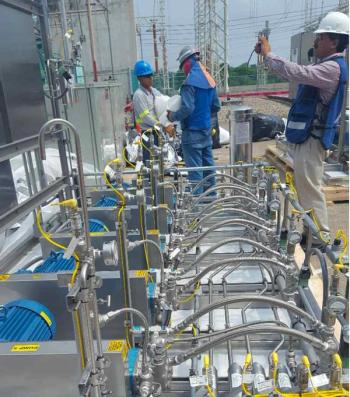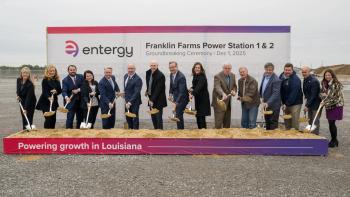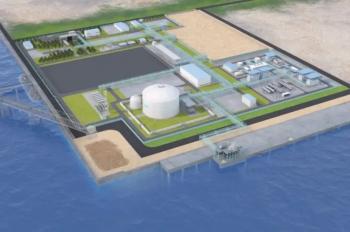
Recent predictions of the GT market
In his
Comments on recent ASME articles
The ASME monthly ME magazine is a great way to keep abreast with ME happenings in general. It provides much useful ME information, but it is very conservative in nature, in and most of the articles are history by the time they appear. An article submitted to this magazine generally takes about four months to get published if it is accepted. On the other hand, blogs that appear for Turbomachinery generally are real news as it takes only a few days from submission to appearance. A case in point are comments on an article by the senior editor about oil/gas production and usage that appeared in the July issue of ME is just now appearing in the new ME November issue.
The July issue of ME magazine carried a belated article by senior editor John Kosowatz entitled ‘Spinning Liquid Gold’ which is about the production of shale oil and gas and how this new abundant supply of gas is used in reciprocating engines – ships, trucks, cars, and locomotives. Fracking shale for NG is now well known and is here to stay. The article also talks about liquefying NG for its use and shipment. However, the article does not even mention the biggest user of this new gas and that is for gas turbines and combined cycles. It should have at least mentioned this very important usage.
Article about new fan engines
The above article is immediately followed by an article entitled, ‘Whisper + Roar’ by Dr. Lee S. Langston. The article is all about new fan engines for commercial airlines, these engines being much quieter and more efficient. It gives a run down on the latest industrial heavy duty gas turbines used to generate electric power. It goes on to give predictions of the GT market of future aero engines (military and commercial) and land-based GTs to the year 2025. However, such predictions in the past have not proven to be very reliable and the chart for electric generation is far too conservative for the year 2015 onward, in the writer's opinion. I believe there will be a surge of gas turbines used for electric power from 2015 through 2030 because of the new abundant supply of gas from shale fracking and because of the need to reduce CO2 and HAPs.
Dr. Langston's article does not talk about the abundant supply of shale-fracked NG nor does the Kosowatz article mention gas turbines. The two articles should have been coordinated and linked together regarding the important supply of natural gas. It seems as though they are living in two different worlds.
The September issue of ME magazine has an article covering the ASME IGTI 2014 Turbo Expo followed by another article by Dr. Langston giving a deserving story about the 75th Diamond Jubilee of the gas turbine. He talks about the importance of the relatively new super alloy single crystal blades as the “Crown Jewels” but he does not mention two other factors just as important that have allowed the TITs to go to and beyond an astonishing 3,000o F for military jets and up to 2,900o F for industrial GTs. The first is the greatly improved blade cooling (internal convection and external film) and the associated casting techniques that have taken place.
Development of TBCs
The second, and perhaps the more important one, is the development of ceramic thermal barrier coatings (TBCs) applied to the outer surfaces of the blades that have been developed over the past 10 years. These two improvements are tied together because there must be very effective internal cooling for the insulation and temperature drop across the TBCs to take place and thus keep the temperature of the blade material to an acceptable level.
Yes, super alloy single crystal blade development by Pratt & Whitney has been a great GT development when coupled to better external film cooling and improved internal cooling for TBCs. As a point of interest, there is a very good article in this magazine about TBCs written by five Rolls Royce authors (paper IGT 2012-679913). This paper explains how TBCs are applied and how they work.
The October issue of ME magazine has a paper entitled ‘Coal's Last Chance’ written by Bridget Mintz Testa, a freelance writer from Houston, Texas, about the prospects of the survival of coal to generate electric power. The paper discusses IGCCs and clean coal technology. The article suggests that these types of plants do not look too promising because of lower efficiency than CCs, much higher cost, higher CO2 emissions, and more complication in designs.
Near the end of this magazine issue there is a short article about Nikola Tesla called ‘The Tesla Phenomena’ that tells about renewed and increased interest in his work and inventions recently. He was truly a great innovator and scientist surpassing Thomas Edison in many respects. That is why I gave him credit for what he did for all of us, at the beginning of this blog.
Finally, in the November last issue of ME magazine, the very last page, there is an ad about a new ASME conference called ‘Shale Development is Mechanical - Hydraulic Fracturing’. It will be held in Houston, Texas March 17 - 19, 2015 at the Marriott Houston Westchase Hotel. This conference should be very interesting to all energy engineers and a timely conference to attend. We will be hearing more about this conference as time goes on. On the Web, go to GO.ASME.ORG/FRATURING.
In his next article, the author explores the latest GT and CC developments and the activities across Texas and the US to meet the new electric power energy challenge.
(Ivan G. Rice was past chairman of the South Texas Section of ASME (1974 - 75), past chairman of the ASME Gas Turbine Division (now IGTI) (1975 - 76). A Life Fellow Member of ASME and Life Member of NSPE/TSPE, he has authored many articles and ASME papers on gas turbines, inter-cooling, reheat, HRSGs, steam cooling and steam injection.)
Newsletter
Power your knowledge with the latest in turbine technology, engineering advances, and energy solutions—subscribe to Turbomachinery International today.





